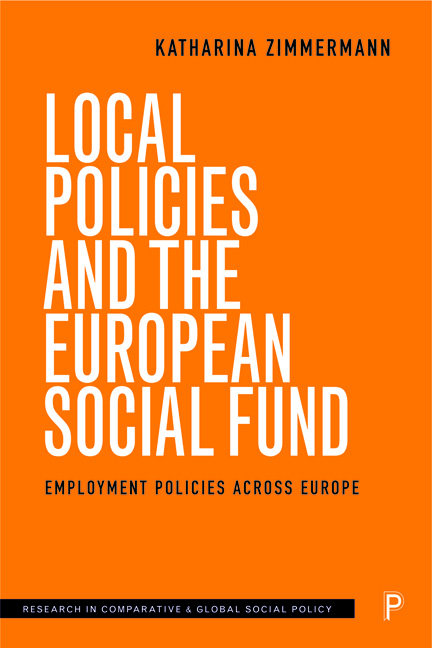Book contents
- Frontmatter
- Contents
- List of Tables and Figures
- List of Abbreviations
- Acknowledgements
- Series Preface
- 1 Introduction
- 2 Social and Employment Policies in Europe from a Multilevel Perspective
- 3 Domestic Responses to European Money: A Theoretical Perspective
- 4 The Research Programme in a Nutshell
- 5 Comparative Insights into Local Responses to the European Social Fund
- 6 What Responses Under what Conditions? Formal Qualitative Comparative Analyses and Preliminary Interpretations
- 7 Beyond Numbers: Using Case Study Insights to Support Interpretation
- 8 A Broader Perspective on Local Policies and the European Social Fund
- 9 Conclusion
- References
- Appendix: Calibration Material
- Index
7 - Beyond Numbers: Using Case Study Insights to Support Interpretation
Published online by Cambridge University Press: 04 March 2021
- Frontmatter
- Contents
- List of Tables and Figures
- List of Abbreviations
- Acknowledgements
- Series Preface
- 1 Introduction
- 2 Social and Employment Policies in Europe from a Multilevel Perspective
- 3 Domestic Responses to European Money: A Theoretical Perspective
- 4 The Research Programme in a Nutshell
- 5 Comparative Insights into Local Responses to the European Social Fund
- 6 What Responses Under what Conditions? Formal Qualitative Comparative Analyses and Preliminary Interpretations
- 7 Beyond Numbers: Using Case Study Insights to Support Interpretation
- 8 A Broader Perspective on Local Policies and the European Social Fund
- 9 Conclusion
- References
- Appendix: Calibration Material
- Index
Summary
In the previous chapter, the results of formal QCA analyses gave us some idea of the contextual conditions behind the usage of the ESF and the changes brought about by it. These results showed that three different patterns of responses to the ESF existed among the 18 cases under study (namely, the absence of usage and change, usage without change, and usage and change together). Each of these response patterns is characterised by a particular combination of conditions that activate the causal mechanisms behind usage and change (cf Figure 6.1 in Chapter 6). In this chapter, the response patterns revealed by the formal QCA are interpreted against the backdrop of the qualitative case knowledge. The idea is to understand how the contextual conditions work, and more specifically, to grasp what is behind the conjunctions of conditions. To do so, I follow the logic of the preliminary typology of ESF responses developed previously, which means that I discuss the three response patterns in turn. In the first part of the chapter, I focus on the pattern where I found neither usage nor change. For this pattern, the QCA findings regarding the absence of usage are particularly relevant. The second part then turns towards the other extreme: those cases where both outcomes were present. Here, both the findings for the presence of usage and the presence of change matter; hence, I discuss both in turn. Finally, the third part of the chapter focuses on those cases that were highlighted as particularly interesting from an analytical point of view: those exhibiting a pattern with usage but no change. Here, I discuss the QCA findings for the absence of change and for the presence of usage. In order to set the stage for the qualitative discussions of the results, the QCA results are reported briefly in set theoretical language at the beginning of each subsection, albeit in a simplified manner. For the subsequent casebased discussions, technical language is avoided.
Administrative burdens and stable fields: non-usage of the ESF
In the sample, there are six cases that display no (or little) usage and no (or little) change: DE1, F2, IT1, SE2 and SE1 and UK1. These cases are located in the lower left quadrant of Figure 6.1.
- Type
- Chapter
- Information
- Local Policies and the European Social FundEmployment Policies Across Europe, pp. 103 - 122Publisher: Bristol University PressPrint publication year: 2019



